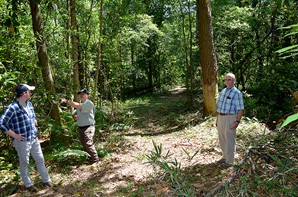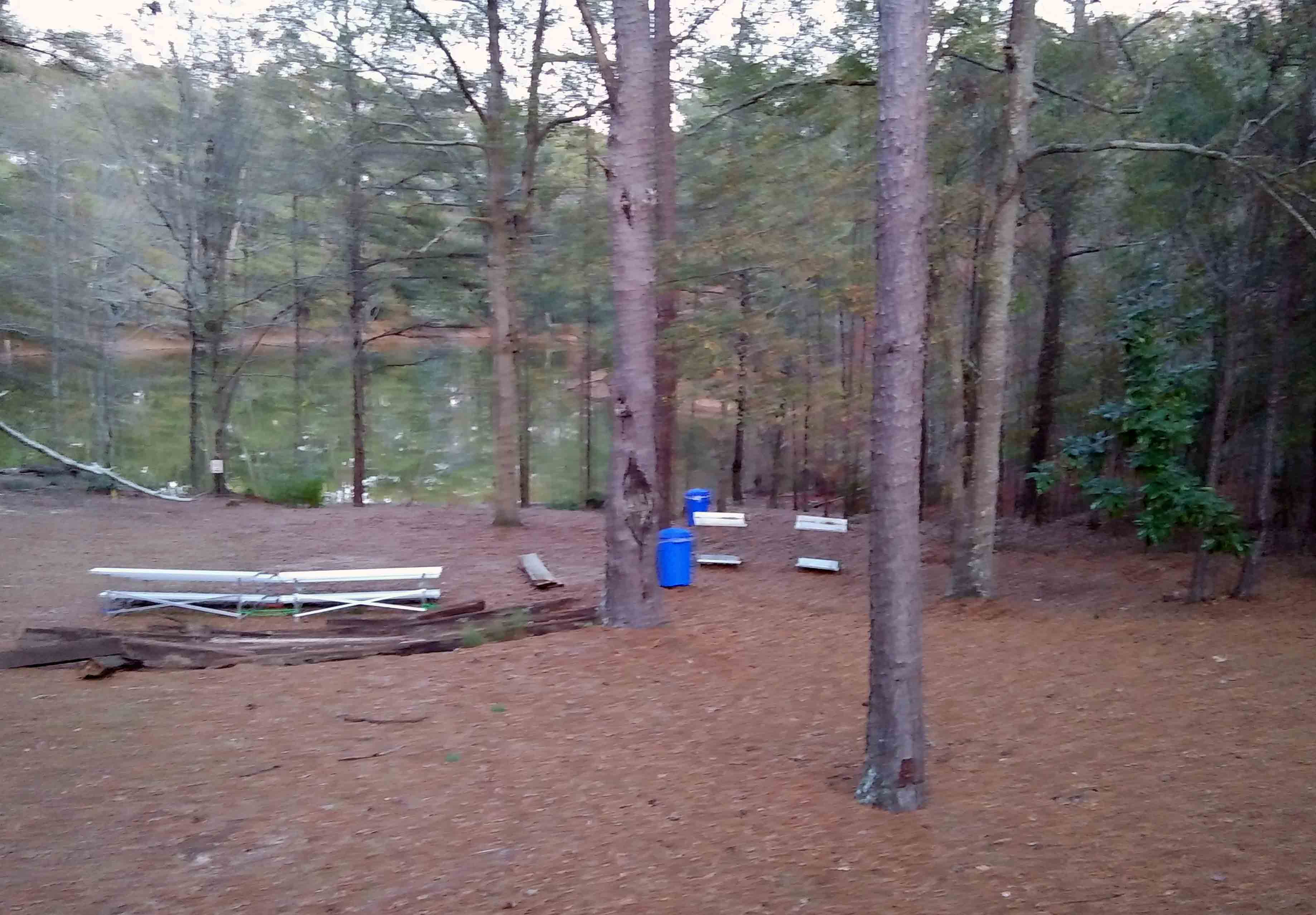Troy University Arboretum
MISSION
Dr. Alvin R. Diamond, Jr., Director
210K McCall Hall (MSCX)
Department of Biological and Environmental Sciences
Troy University
Troy, AL 36082
adiamond@troy.edu
Telephone: 1-334-670-3938
The mission of the Troy University Arboretum is to acquire representative species of the flora of Southeast Alabama and to display them in situations that mimic the natural conditions under which the species would occur. In particular, the Arboretum is interested in research on rare and uncommon species and communities. The Arboretum works to preserve representative members, communities and habitats of the Wiregrass region of Southeast Alabama on its 75-acre's adjacent to Troy University's main campus and on its 18 acre Pocosin Nature Preserve located approximately 6 miles due east of the main campus.
The Arboretum seeks to further the educational opportunities available to the University and the surrounding area. As such, the Arboretum serves as a living laboratory for ecology, field botany, field vertebrate zoology, environmental science, entomology, and other classes, introducing students to the variety and diversity of the Wiregrass region of Alabama.
The Arboretum also serves as a readily accessible area to the University and the city of Troy for such activities as picnics, bird watching and the simple enjoyment of nature. The Arboretum is open to the public from sunrise until sunset seven days a week.
Additional Educational Resources at Troy
Herbarium: houses over 6,000 specimens of vascular plants, bryophytes, and lichens
Center for Environmental Research and Service (CERS),provides environmental services
to the state of Alabama
Nonpoint Source (NPS) assists with environmental education for the residents of Alabama
Science in Motion provides teacher education assistance in the physical and life sciences
TROY Arboretum receives $162K grant from SCRC
https://today.troy.edu/news/troy-arboretum-receives-162k-grant-from-scrc/
News | September 13, 2024
The grant will be used to fund educational and recreational upgrades.
Troy University's Arboretum has received a $162,266 grant from the Southeast Crescent
Regional Commission (SCRC) to enhance educational opportunities and recreational access.
Part of the inaugural State Economic and Infrastructure Development (SEID) grant program, the $19 million investment will fund projects that align with priorities identified in SCRC's authorizing statute, Five-Year Strategic Plan and State Economic Development Plans. Five Alabama projects were selected to receive funding totaling $1.18 million.
Dr. Alvin Diamond, biology professor and Director of the Arboretum, said most of the funds will be used for restoring the Hickory Loop Nature Trail.
“The only options we have to get to that area are to climb down the bank of the creek, step across the creek and then climb up the bank on the other side—which is not convenient—or to walk down Pell Avenue to the corner and go in there,” he said, “but that's not a good option either because of speeding and traffic. And now that we've got the all-terrain wheelchair, we want to install bridges and boardwalks to everyone can get across to these new trails.”
The Arboretum's entrance will also receive upgrades with the installation of a wildlife viewing area, informational signs and updates to the pitcher plant bog and rain garden. Benches and waste bins will also be installed along the trails.
This is the largest grant the arboretum has received since restoration efforts began in early 2022.
Updates continue to be made to the entrance area that features a rain garden, a pitcher
plant bog and a stream that is currently undergoing restoration. (Photo by Rick Reynolds)
“We're grateful to the Southeast Crescent Regional Commission for the support we've
received in our goal of not just restoring the arboretum to its former glory, but
in making it better and more accessible than it was before,” Diamond said. “With this
grant, we're one step closer to making that goal a reality.”
The Arboretum boasts 75 acres of land, over 10 miles of fully-accessible walking trails, a Champion Tree, a Moon Tree, an outdoor classroom and hundreds of native plants and wildlife species. As of March, it is also a designated stop on the Alabama Birding Trails.
The community is invited to visit the trails and volunteer. For more information on how to get involved, contact Diamond at adiamond@troy.edu or 334-670-3938. To stay up-to-date on the latest projects, visit the arboretum's Facebook page.
About the Southeast Crescent Regional Commission (SCRC)
The SCRC is a federal-state partnership authorized in the 2008 Farm Bill to promote
and encourage economic development in areas of Alabama, Georgia, Mississippi, North
Carolina, South Carolina, Virginia and all of Florida. SCRC invests in projects that
support basic infrastructure, business development, natural resources, and workforce/labor
development. SCRC's mission is to help create jobs, build communities, and improve
the lives of those who reside in the 428 counties of the seven-state region.
Troy University Arboretum awarded $25,000 grant for continued upgrades
https://today.troy.edu/news/troy-university-arboretum-awarded-25000-grant-for-continued-upgrades/
Moon Tree Planting (May 2, 2024)
The rebirthing of a nature sanctuary in a city
By Jaine Treadwell

In the distance, there were sounds of a city. The hum of traffic, the occasional honking
of horns. Voices and a boom box. But, just down the trail, the sounds of Mother Nature
hushed - the chatter of squirrels, the singing of birds, the humming of bees, rustling
in the brush. And, then there were voices. Excited voices. Troy University Professor
Dr. Alvin Diamond, Jonathan Miller, a lecturer and biologist; Rose Horn, a graduate
student; and volunteers Clark Harris and Joshua Bailey were just where they wanted
to be and doing exactly what they want to do – bringing back the beauty of and purpose
for the Troy University Arboretum.
The Arboretum is a treasure for the university, the city of Troy and all who will
come to enjoy the “fruits” of Mother Nature. That was the consensus of the group.
“And the Arboretum has been left to linger too long.” The Arboretum has recently been
returned to the university' biology department and efforts are underway to bring the
75-acre Arboretum back to where it has been and beyond. A $5,000 grant from Bass Pro
Shop was seed money for the projects that are underway including the replacement of
the deck on the education complex building. The roof is also in need of repair. “The
plan is to get the facility usable again,” Diamond said. “It can be useful for schools,
for groups including the Pike County Treasure Forest, master gardeners. The interest
of the volunteers is not limited to but focuses on the pond. “We'd like to clear around
the pond. It's great view when you can see it,” Josh said. “We've been out on the
water a few times but we want to get canoes back out on the pond.” The arboretum includes
walking trails that total under six miles but only one mile is now open. “A lot of
debris has to be cleared and it includes a lot of big logs,” Clark said. “Dr. Diamond
said the logs will probably be used to line the trails rather than trying to remove
them.” Rose is in graduate school, mainly due to her interest in the restoration of
the arboretum. “This is such a great place with all kinds of wildlife and vegetation,”
she said. “I want to be a part of bringing the arboretum back to life and making it
a destination for those who enjoy nature.” For Miller, the arboretum will be a place
for students to come to learn and to enjoy and for the community as well. “More classes
can be taught out here and we can also have labs, “Miller said. “There are many teaching
and learning opportunities that will be available, not just for university students,
but high school and elementary students and also the community.” Diamond said the
arboretum is a natural park in the midst of a busy city. “It's a place where people
can come to enjoy nature in many different ways, alone or with others,” he said. “We
are excited about the progress that is being made and the many opportunities the arboretum
will offer our community.”
